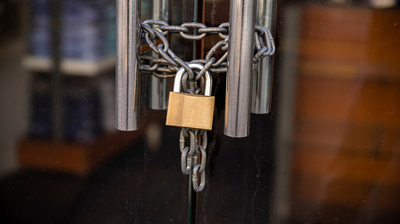
Story at a glance
Maeve McDermott, an 18-year-old first-year student at The College of Saint Rose in Albany, New York, was out with two friends when she read an article breaking the news that the college planned to shut its doors in 2024.
“We read the article at the same time, and we just looked at each other and literally started crying,” McDermott said.
Saint Rose is the most recent of over a dozen small, private college to close this year. Data suggest that a number of its students will not re-enroll in another similar institution.
And a portion might not earn their degrees altogether.
Hundreds of post-secondary schools close or merge with another institution every year, according to U.S. Department of Education data. Most of the colleges closing are two-year for-profit institutions.
But even though it is less common for private, non-profit colleges to close, the number of these schools is shrinking. There were 1,643 private, four-year non-profit title IV institutions during the 2017-18 academic year in United States, according to data from the National Center for Education Statistics.
That number has since fallen to 1,587 for the 2022-23 academic year.
Once a college closes, students typically have two options, according to Robert Kelchen, a professor of higher education at the University of Tennessee.
“They can finish earning their degrees at another institution which may require them to repeat a number of courses if a teach-out agreement is not in place,” he wrote in 2020. “Alternatively, they can apply for a closed school discharge from the U.S. Department of Education.”
Kelchen noted that while receiving such a discharge frees students from paying any student loans, it also forces them to restart their studies at another institution.
School closures impact thousands of people every year, but there really isn’t a lot of data on what happens to students when their college or university closes.
One 2022 study from the State Higher Education Executive Office Association (SHEEO) found that about 47 percent of students who experienced a closure between 2004 and 2020 continued their enrollment at another institution post-closure.
Out of those students who did re-enroll, nearly 30 percent did so within a month of their school closing.
Meanwhile, almost 24 percent enrolled in another school between one and four months after experiencing a closure, about 20 percent re-enrolled between four months and a year afterward and 26 percent re-enrolled after more than a year.
Re-enrollment rates varied by school type, the SHEEO study also found.
Two- and four-year for-profit schools that closed had the lowest re-enrollment rates among students. Overall, the study found that about 34 percent and 48 percent of students at these types of schools, respectively, re-enrolled after experiencing a closure.
Public four-year institutions had the highest re-enrollment out of any school type at around 80 percent, according to the study, followed by private, non-profit two- and four-year colleges.
After experiencing a closure, about 71 percent of students at private, non-profit two-year colleges re-enrolled and about 70 percent of students at private, non-profit 4-year colleges did the same.
Re-enrollment rates also vary by the type of closure a school experiences: either planned or abrupt.
For example, at four-year non-profit schools that closed in an orderly fashion, like those that provided students with a teach-out plan, about 70 percent of students re-enrolled. Meanwhile, about 75 percent of students attending a four-year non-profit school that shut abruptly re-enrolled, the study found.
For Saint Rose students, the future of their studies remains unclear. Like with many nonprofit school closures, neighboring institutions are offering to help students transfer or complete their coursework.
“It’s like starting over that 11th grade college search process that nobody likes to do,” said 19-year-old Kelsey Higgins, a first-year at The College of Saint Rose.
Education experts who spoke with The Hill were adamant that there are plenty of options for students at closing colleges to finish their coursework at other schools—even if the process might be painful.
But while there might be opportunities to continue a degree at a neighboring school, a school closure has the potential to impact student preferences, according to Jeremy Wright-Kim, an assistant professor at the Marsal Family School of Education at the University of Michigan.
“It’s a matter of can they go to an institution that will honor a large portion of their credits ... versus do they want to,” he said.
“When we are saying here’s an option for you or multiple options for you, we need to recognize that those are preferable options for the students,” Wright-Kim added.